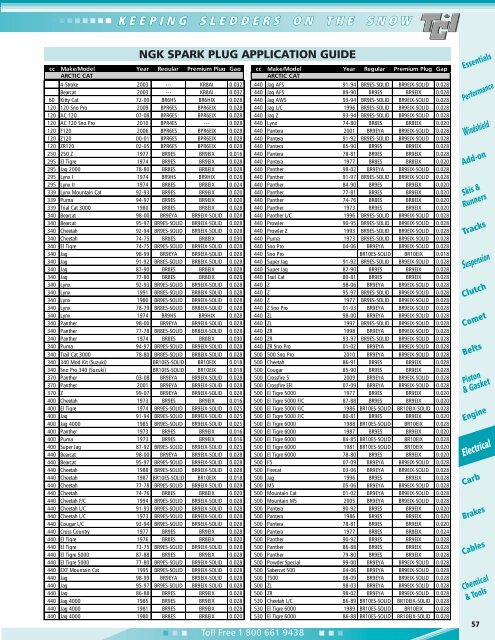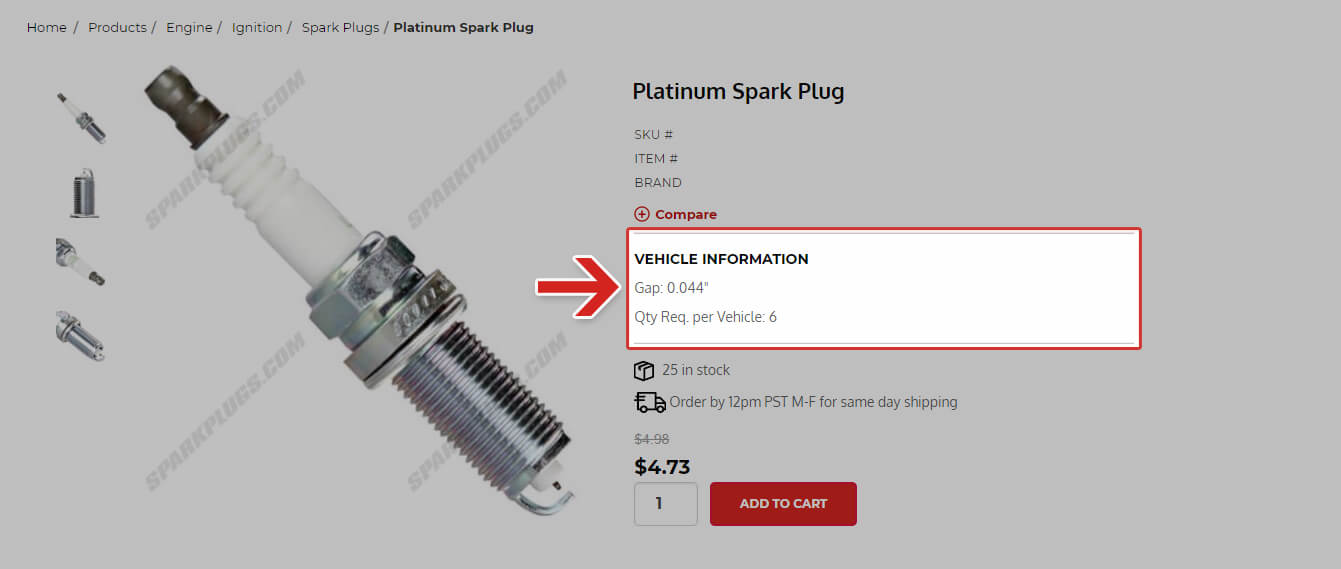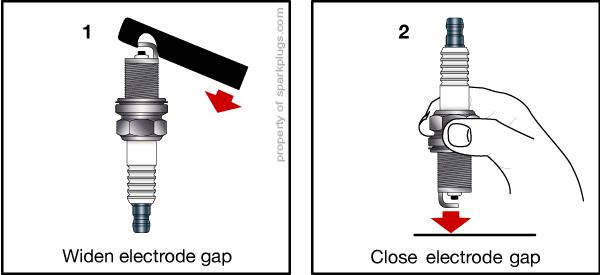NGK spark plug gap settings vary by vehicle. Refer to your vehicle’s manual for specific gap information.
NGK spark plugs are a vital component in your vehicle’s ignition system. Ensuring the correct gap setting is crucial for optimal engine performance. By following the manufacturer’s recommendations, you can maintain fuel efficiency, reduce emissions, and prevent potential engine issues.
Understanding and adjusting the Ngk spark plug gap settings is a simple yet essential maintenance task that can make a significant difference in your vehicle’s overall performance. We will explore the importance of correct spark plug gap settings and provide guidance on how to properly set the gap for NGK spark plugs.
Contents
The Importance Of Correct Spark Plug Gap
Achieving the correct spark plug gap, especially in NGK spark plug settings, is crucial for optimal engine performance. This adjustment ensures efficient fuel combustion and ignition, leading to improved fuel economy and overall engine health. Improper gap settings can result in misfires and reduced engine efficiency.
When it comes to optimizing your engine’s performance, one crucial yet often overlooked factor is the spark plug gap. The spark plug gap refers to the distance between the center and ground electrode of a spark plug. It might seem like a minor detail, but maintaining the correct spark plug gap is essential for ensuring efficient combustion and preventing misfires.
Boosting Engine Efficiency
A properly set spark plug gap plays a significant role in boosting engine efficiency. The gap determines the size of the spark produced during the ignition process. If the gap is too wide, the spark may be weak, resulting in incomplete combustion.
On the other hand, if the gap is too narrow, the spark might be too small to ignite the fuel-air mixture properly. By maintaining the correct spark plug gap, you can ensure a consistent and powerful spark, leading to improved fuel efficiency and overall engine performance.
Preventing Misfires
Misfires occur when the spark plug fails to ignite the fuel-air mixture at the intended time. This can lead to a range of issues, including rough idle, reduced power, increased emissions, and even engine damage. One common cause of misfires is an incorrect spark plug gap. If the gap is too wide, the spark may struggle to jump across, resulting in a weak or intermittent spark.
Conversely, if the gap is too narrow, the spark may be prone to “fouling,” where the spark plug tip becomes coated with deposits, hindering its ability to ignite the mixture effectively. By maintaining the correct spark plug gap, you can prevent misfires and ensure smooth engine operation.
Proper spark plug gap settings are specific to each vehicle’s make and model, and it is crucial to consult the manufacturer’s recommendations or a trusted automotive professional to determine the correct gap for your engine. Remember, taking the time to check and adjust the spark plug gap can make a significant difference in your engine’s performance and longevity.

Credit: www.yumpu.com
The Ideal Ngk Spark Plug Gap Settings
Determining the ideal gap for NGK spark plugs is crucial for efficient engine performance. NGK spark plug gap settings vary depending on the specific make and model of the vehicle. It is important to consult the manufacturer’s recommendations and adjust the gap accordingly for optimal ignition efficiency.
Determining the Ideal Gap for NGK Spark Plugs
Consulting Manufacturer Specifications
When determining the ideal gap for NGK spark plugs, it’s crucial to consult the manufacturer’s specifications. This information can typically be found in the vehicle’s owner’s manual or on the NGK website. The manufacturer’s specifications provide the recommended gap distance for the specific make and model of the vehicle, ensuring optimal performance and longevity of the spark plugs. For example, NGK specifies the gap for each of its spark plug types, allowing vehicle owners to easily determine the correct gap for their application.
Adjusting for Specific Engine Needs
In some cases, it may be necessary to adjust the spark plug gap to accommodate specific engine needs. Factors such as modifications, fuel type, and performance enhancements can influence the ideal gap setting. When making these adjustments, it’s important to consider the engine’s combustion chamber design and the ignition system’s capabilities. By carefully evaluating these factors, vehicle owners can fine-tune the spark plug gap to maximize efficiency and power output.
By adhering to manufacturer specifications and considering specific engine requirements, determining the ideal gap for NGK spark plugs becomes a precise and essential aspect of maintaining peak engine performance.
How to Adjust Spark Plug Gap
Adjusting the spark plug gap is an important part of maintaining your vehicle’s performance and fuel efficiency. The spark plug gap refers to the distance between the center and ground electrode of the spark plug.
It is important to set the gap correctly to ensure proper ignition and combustion. In this step-by-step guide, we will walk you through the process of measuring and adjusting the spark plug gap for optimal engine performance.

Tools You’ll Need
Before you begin, gather the following tools:
- A set of new NGK spark plugs
- A spark plug gap tool or feeler gauge
- A socket wrench with a spark plug socket
- A torque wrench
Measuring And Adjusting The Gap
Follow these steps to measure and adjust the spark plug gap:
- Start by ensuring the engine is cool and turned off. Locate the spark plugs, which are typically connected to thick wires leading to the ignition coils.
- Remove the spark plug wire by gripping the boot firmly and pulling it straight off the plug.
- Using a socket wrench with a spark plug socket, carefully remove the old spark plug by turning it counterclockwise.
- Inspect the old spark plug for signs of wear or damage. If necessary, replace it with a new NGK spark plug.
- Using a spark plug gap tool or feeler gauge, measure the gap between the center and ground electrode of the spark plug. Refer to your vehicle’s owner’s manual or NGK’s website for the recommended gap setting specific to your vehicle.
- If the gap is too small, gently widen it by carefully bending the ground electrode outwards. If the gap is too large, carefully bend the ground electrode inwards to reduce the gap.
- Once you have adjusted the gap, reinsert the spark plug into the socket and hand-tighten it. Use a torque wrench to tighten the spark plug to the manufacturer’s recommended torque specification.
- Reattach the spark plug wire to the spark plug by pushing the boot firmly onto the plug until you feel it snap into place.
- Repeat these steps for each spark plug in your vehicle.
Safety Precautions
When working with spark plugs, it is important to take the following safety precautions:
- Always ensure the engine is cool before attempting to remove spark plugs to avoid the risk of burns.
- Disconnect the battery or ignition system to prevent accidental engine starts while working on the spark plugs.
- Handle spark plugs with care and avoid dropping them, as this can damage the electrodes.
- Wear protective gloves and safety glasses to protect yourself from any potential debris.

Credit: www.youtube.com
Frequently Asked Questions
Here are some FAQs about Ngk spark plug gap –
What Should Ngk Spark Plugs Be Gapped?
NGK spark plugs should be gapped according to the manufacturer’s specifications, which can vary depending on the specific make and model of the vehicle. It is important to consult the owner’s manual or a trusted mechanic to ensure the correct gap is set for optimal performance.
What Is The Standard Spark Plug Gap Setting?
The standard spark plug gap setting is typically 0. 028 to 0. 06 inches. It’s important to check the specific requirements for your vehicle.
What Is The Best Spark Plug Gap For Performance?
The best spark plug gap for performance is typically 0. 6-1. 0mm. However, always check the manufacturer’s guidelines for your specific vehicle. Adjusting the gap can enhance combustion and power output. Regular maintenance ensures optimal performance.
Can A Wrong Spark Plug Gap Cause Misfire?
Yes, a wrong spark plug gap can cause misfire. If the gap is too small, the spark may not be strong enough to ignite the fuel mixture. If the gap is too wide, the spark may not reach the fuel mixture at all.
It is important to follow the manufacturer’s recommended gap for optimal performance.
What Is The Recommended Spark Plug Gap For Ngk Spark Plugs?
The recommended spark plug gap for NGK spark plugs is typically 0. 028 to 0. 031 inches.
Conclusion
To wrap up, setting the correct gap for NGK spark plugs is crucial for optimal engine performance. Following the manufacturer’s guidelines ensures efficiency and longevity of your vehicle. Remember, a well-maintained spark plug can make a significant difference in your vehicle’s overall performance and fuel efficiency.
Keep your engine running smoothly by paying attention to the spark plug gap settings.
